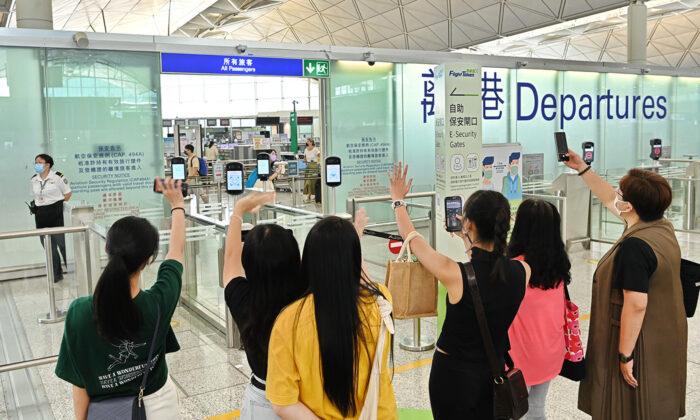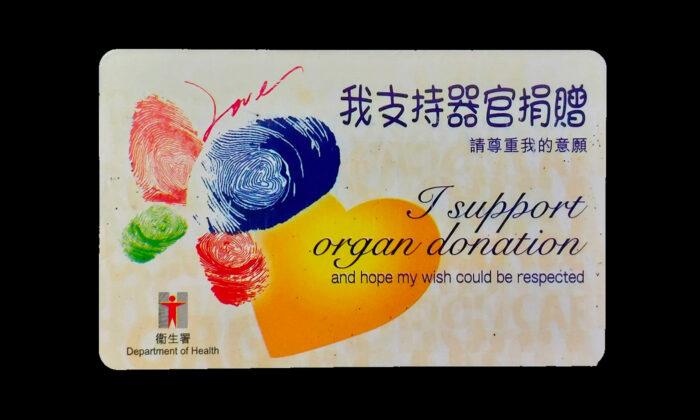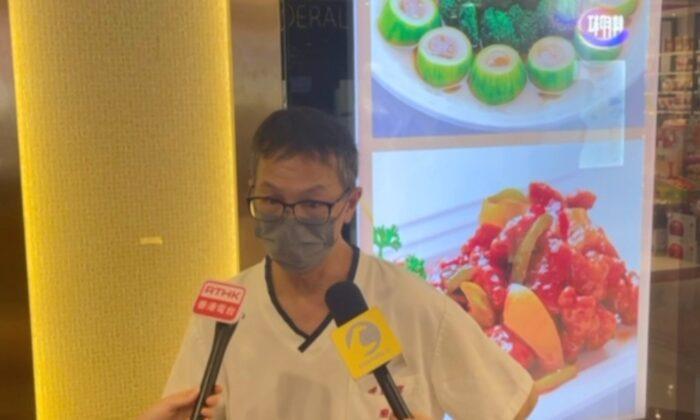The whole saga has been delayed for a year since the end of 2021. Galschiøt said in a statement that he had found a shipping company and a hauling company to remove the sculpture at any time and planned to display it in Denmark. However, the lawyers he commissioned tried many times to contact the University of Hong Kong but could not make contact. The lawyer representing HKU has not responded for a long time and recently stated that it has not received any instructions from its client on the inspection and removal of the Pillar.
In response to media inquiries, the University of Hong Kong stated that the University Council’s decision to remove the Pillar in 2021 was based on legal and security risk considerations, and the follow-up work so far was also legitimate and reasonable.
Sculpture Creator’s Repeated Requests to Get it Back Came to No Avail
After the implementation of the Hong Kong National Security Law, the authorities began to deal with those “pains in the neck,” according to the Chinese Communist Party (CCP). In October 2021, it was rumoured that the HKU authority planned to remove the “Pillar of Shame.” At that time, Jens Galschiøt had already opposed the removal of the Pillar, believing that it would be blasphemy by all standards to remove or destroy the monument commemorating the deceased. He even criticized that if the CCP could not allow six square meters (66 sq. ft) of space to commemorate the victims of June 4, it would amount to extremely miserly behaviour.At that time, the University of Hong Kong engaged the American law firm, Mayer Brown, to send a letter to the former leaders of the disbanded HK Alliance in Support of Patriotic Democratic Movements of China, saying that the “Pillar of Shame” would be removed before 5 p.m. on Oct. 13, 2021. But about a week later, following protests from U.S. lawmakers and a number of non-profit organizations, Mayer Brown said it would no longer represent HKU on the issue, and gave “no further explanation.”
Galschiøt also issued a statement stating that he is the owner of the Pillar. He has entrusted a lawyer to write to the University of Hong Kong, requesting a hearing on the incident. He hopes the University of Hong Kong will respect his ownership and allow him to remove the “Pillar of Shame” from Hong Kong in good condition. After leaving Hong Kong, it is planned to move the Pillar to other countries on a display tour.
He also expressed his hope in November last year that he would come to Hong Kong to deal with it so as not to damage the Pillar during demolition and relocation. Galschiøt, who was twice refused entry to Hong Kong, also asked the government to guarantee that he and his team members would not be charged with violating the Hong Kong National Security Law, but the authorities refused to give any firm answer so far.
At that time, Danish Foreign Minister Jeppe Kofod also issued a statement, saying that expressing opinions through artistic manifestation is a basic human right. And he made similar comments to the Chinese authorities based on this.
HKU Started to Remove the Pillar Late at Night with the Police on Full Alert
At about 10 p.m. on Dec. 22 last year (2021), the University of Hong Kong finally brought in a number of contractor staff to set up a hoarding to shield the “Pillar of Shame” located at the podium on the first floor of the University campus. It was disassembled and taken away in the early morning of the next day. Police Tactical Unit (PTU) was on standby outside the HKU campus.https://www.youtube.com/watch?v=h99z5xJjLyg
HK Shipping Firms Reluctant to Move the Pillar on Fears of Violating the Law
According to Galschiøt, Hong Kong logistics companies are worried about breaking the law and are not willing to assist in handling it. What is remaining as the last step is the arrangement for it to be sent to the Hong Kong port terminal.Moreover, Galschiøt said that HKU has never informed him of the exact location of the sculpture. He only knew from media reports that the “Pillar of Shame” was stored in a container at the HKU Kadoorie Centre in Shek Kong. All these add up and give the sculpture a new symbolism, that is, reflecting the authorities’ prohibition on freedom of expression.
‘Pillar of Shame’ Has Been Hailed ‘Cornerstone of Freedom of Speech in HK’
Galschiøt has made five “Pillars of Shame (Skamstøtten in his native Danish).” The one in Hong Kong arrived in May 1997 and was exhibited at the June 4th candlelight vigil rally in Victoria Park that year. It is engraved with a number of figures with distorted bodies and painful faces, symbolizing the dead and wounded in the bloody suppression, commemorating the massacres in various places, and reminding the world not to forget the people who suffered because of the oppression. One side of the pedestal is engraved with the block letter script “THE TIANANMEN MASSACRE, JUNE 4TH 1989” and the cursive script “The old cannot kill the young forever” in red letters, and there are Chinese sentences with the same meaning on the opposite side.After the June 4th rally in 1997, the 5-meter (16.5 ft)-high “Pillar of Shame” was transported to HKU in two parts by a truck. The process was scarred by the confrontation and scuffles between students and passers-by on the one side and the police and the HKU security guards on the other. In 1998, the HKUSU, via universal suffrage, voted to erect it permanently on the campus. Since then, the HKUSU will clean the sculpture stationed at Haking Wong podium every year as a tradition to commemorate the June 4th Incident.
In 2008, Galschiøt came to Hong Kong and painted the “Pillar of Shame” in orange, implying the softening of China’s stance from red (representing the CCP) to orange in support of human rights forces.

In October 2021, the University of Hong Kong asked the HK Alliance in Support of the Patriotic and Democratic Movement of China to remove the “Pillar of Shame.” In December, the Board of the University of Hong Kong decided to demolish the “Pillar of Shame.” In the early morning of the 23rd, the Pillar was dismantled into two parts and moved away. Until that time, many people described the Pillar’s presence as a “cornerstone for freedom of speech in Hong Kong.”
Galschiøt clearly stated that even if Hong Kong University brutally demolished the sculpture, countless “Pillars of Shame” would still blossom all over the world. He also invoked the motto engraved on the Pillar: The old cannot kill the young forever. Afterward, he also released the 3D model file of the “Pillar of Shame” on his website, saying that China (the CCP) took down one Pillar of Shame and got thousands in return.
On the evening of June 4 this year, one 3D-printed “Pillar of Shame” (also known as the “CCP’s Pillar of Shame”) was erected at the June 4 mourning gathering held at the Chiang Kai-shek Memorial Hall in Taipei.




